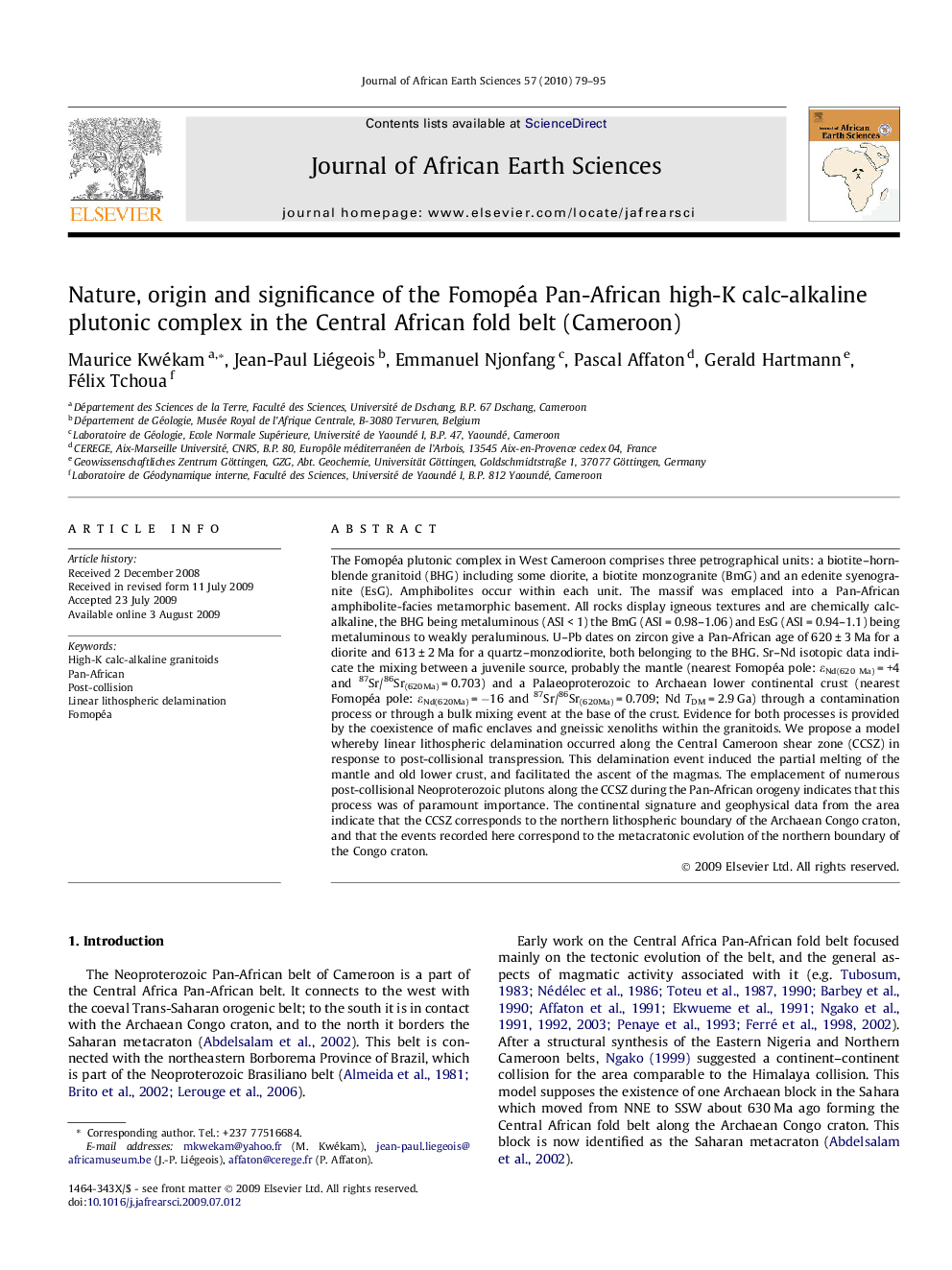| کد مقاله | کد نشریه | سال انتشار | مقاله انگلیسی | نسخه تمام متن |
|---|---|---|---|---|
| 4729529 | 1640245 | 2010 | 17 صفحه PDF | دانلود رایگان |

The Fomopéa plutonic complex in West Cameroon comprises three petrographical units: a biotite–hornblende granitoid (BHG) including some diorite, a biotite monzogranite (BmG) and an edenite syenogranite (EsG). Amphibolites occur within each unit. The massif was emplaced into a Pan-African amphibolite-facies metamorphic basement. All rocks display igneous textures and are chemically calc-alkaline, the BHG being metaluminous (ASI < 1) the BmG (ASI = 0.98–1.06) and EsG (ASI = 0.94–1.1) being metaluminous to weakly peraluminous. U–Pb dates on zircon give a Pan-African age of 620 ± 3 Ma for a diorite and 613 ± 2 Ma for a quartz–monzodiorite, both belonging to the BHG. Sr–Nd isotopic data indicate the mixing between a juvenile source, probably the mantle (nearest Fomopéa pole: εNd(620 Ma) = +4 and 87Sr/86Sr(620Ma) = 0.703) and a Palaeoproterozoic to Archaean lower continental crust (nearest Fomopéa pole: εNd(620Ma) = −16 and 87Sr/86Sr(620Ma) = 0.709; Nd TDM = 2.9 Ga) through a contamination process or through a bulk mixing event at the base of the crust. Evidence for both processes is provided by the coexistence of mafic enclaves and gneissic xenoliths within the granitoids. We propose a model whereby linear lithospheric delamination occurred along the Central Cameroon shear zone (CCSZ) in response to post-collisional transpression. This delamination event induced the partial melting of the mantle and old lower crust, and facilitated the ascent of the magmas. The emplacement of numerous post-collisional Neoproterozoic plutons along the CCSZ during the Pan-African orogeny indicates that this process was of paramount importance. The continental signature and geophysical data from the area indicate that the CCSZ corresponds to the northern lithospheric boundary of the Archaean Congo craton, and that the events recorded here correspond to the metacratonic evolution of the northern boundary of the Congo craton.
Journal: Journal of African Earth Sciences - Volume 57, Issues 1–2, April 2010, Pages 79–95